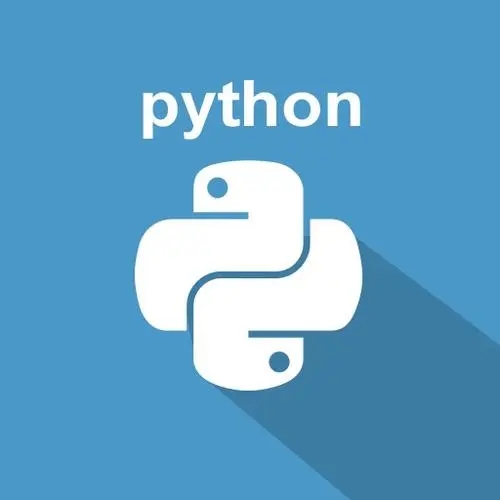
在本文中,我们将学习如何在Python中以百分比形式获取词频。
假设我们已经获取了一个字符串输入列表。现在,我们将找到给定输入字符串列表中每个单词的百分比。
(Occurrence of X word / Total words) * 100
使用sum()、Counter()、join()和split()函数
使用 join()、split() 和 count() 函数
立即学习“Python免费学习笔记(深入)”;
使用operator模块的countOf()函数。
join() 是Python中的一个字符串函数,用于将由字符串分隔符分隔的序列元素连接起来,形成一个字符串。
Counter() 函数是计算可哈希对象数的子类。它在调用/调用时隐式创建可迭代对象的哈希表。
以下是要执行所需任务的算法/步骤:
使用 import 关键字从集合模块导入 Counter 函数。
创建一个变量来存储输入列表字符串并打印该列表。
使用join()函数连接输入列表的所有字符串元素。
使用 split() 函数(将字符串分割为列表。可以定义分隔符;默认分隔符为任意空白字符)将连接的字符串分割为单词列表,并使用 Counter() 函数获取单词频率作为键值对
使用values()函数从Counter中获取所有值(频率/计数),并使用sum()函数获取它们的总和(返回所有值的总和)可迭代中的项目)。
使用items()函数获取上述计数器单词中每个单词的百分比(返回一个视图对象,即它包含字典的键值对,作为元组在列表中)。
打印输入列表中每个单词的百分比。
以下程序使用 sum()、Counter()、join() 和 split() 函数返回给定输入字符串列表中每个单词的百分比 –
# importing a Counter function from the collections module
from collections import Counter
# input list of strings
inputList = ["hello tutorialspoint", "python codes", "tutorialspoint for python", "see python codes tutorialspoint"]
print("Input list:\n", inputList)
# Joining all the string elements of the list using the join() function
join_string = " ".join(i for i in inputList)
# splitting the joined string into a list of words and getting the
# frequency of words as key-value pairs using Counter() function
counter_words = Counter(join_string.split())
# getting all the values(frequencies/counts) from counter and
# finding the total sum of them
total_sum = sum(counter_words.values())
# getting the percentage of each word from the above counter words
res_percentage = {key: value / total_sum for key,
value in counter_words.items()}
# printing the percentage of each word from the input list
print("Percentage of each word from the input list:\n", res_percentage)
在执行时,上述程序将生成以下输出 -
Input list:
['hello tutorialspoint', 'python codes', 'tutorialspoint for python', 'see python codes tutorialspoint']
Percentage of each word from the input list:
{'hello': 0.09090909090909091, 'tutorialspoint': 0.2727272727272727, 'python': 0.2727272727272727, 'codes': 0.18181818181818182, 'for': 0.09090909090909091, 'see': 0.09090909090909091}
以下是要执行所需任务的算法/步骤:
创建一个空字典来存储结果百分比/词频。
使用for循环遍历单词列表。
使用 if 条件语句 来检查当前元素是否不在字典的键中,使用 keys() 函数。
如果上述条件为真,则使用count()函数获取该键(单词)的计数。
将其除以单词数即可获取当前单词频率,并将其作为键存储在上面创建的新词典中。
打印输入列表中每个单词的百分比。
以下程序使用 join()、split() 和 count() 函数返回给定输入字符串列表中每个单词的百分比 –
# input list of strings
inputList = ["hello tutorialspoint", "python codes", "tutorialspoint for python", "see python codes tutorialspoint"]
# joining all the elements of the list using join()
join_string = " ".join(i for i in inputList)
# splitting the joined string into a list of words
listOfWords = join_string.split()
# Creating an empty dictionary for storing the resultant percentages
resDict = dict()
# traversing through the list of words
for item in listOfWords:
# checking whether the current element is not in the keys of a dictionary
if item not in resDict.keys():
# getting the percentage of a current word if the condition is true
resDict[item] = listOfWords.count(item)/len(listOfWords)
# printing the percentage of each word from the input list
print("Percentage of each word from the input list:\n", resDict)
在执行时,上述程序将生成以下输出 -
Percentage of each word from the input list:
{'hello': 0.09090909090909091, 'tutorialspoint': 0.2727272727272727, 'python': 0.2727272727272727, 'codes': 0.18181818181818182, 'for': 0.09090909090909091, 'see': 0.09090909090909091}
以下程序使用 countOf() 函数返回给定输入字符串列表中每个单词的百分比 -
import operator as op
# input list of strings
inputList = ["hello tutorialspoint", "python codes", "tutorialspoint for python", "see python codes tutorialspoint"]
# joining all the elements of list using join()
join_string = " ".join(i for i in inputList)
# splitting the joined string into list of words
listOfWords = join_string.split()
resDict = dict()
for item in listOfWords:
# checking whether the current element is not in the keys of dictionary
if item not in resDict.keys():
resDict[item] = op.countOf(listOfWords, item)/len(listOfWords)
print("Percentage of each word from the input list:\n", resDict)
在执行时,上述程序将生成以下输出 -
Percentage of each word from the input list:
{'hello': 0.09090909090909091, 'tutorialspoint': 0.2727272727272727, 'python': 0.2727272727272727, 'codes': 0.18181818181818182, 'for': 0.09090909090909091, 'see': 0.09090909090909091}
在本文中,我们学习了三种不同的 Python 方法来计算百分比词频。我们还学习了如何使用操作符模块的新函数 countOf() 来获取列表元素的频率。
以上就是Python程序获取单词频率的百分比的详细内容,更多请关注php中文网其它相关文章!

python怎么学习?python怎么入门?python在哪学?python怎么学才快?不用担心,这里为大家提供了python速学教程(入门到精通),有需要的小伙伴保存下载就能学习啦!

Copyright 2014-2025 https://www.php.cn/ All Rights Reserved | php.cn | 湘ICP备2023035733号